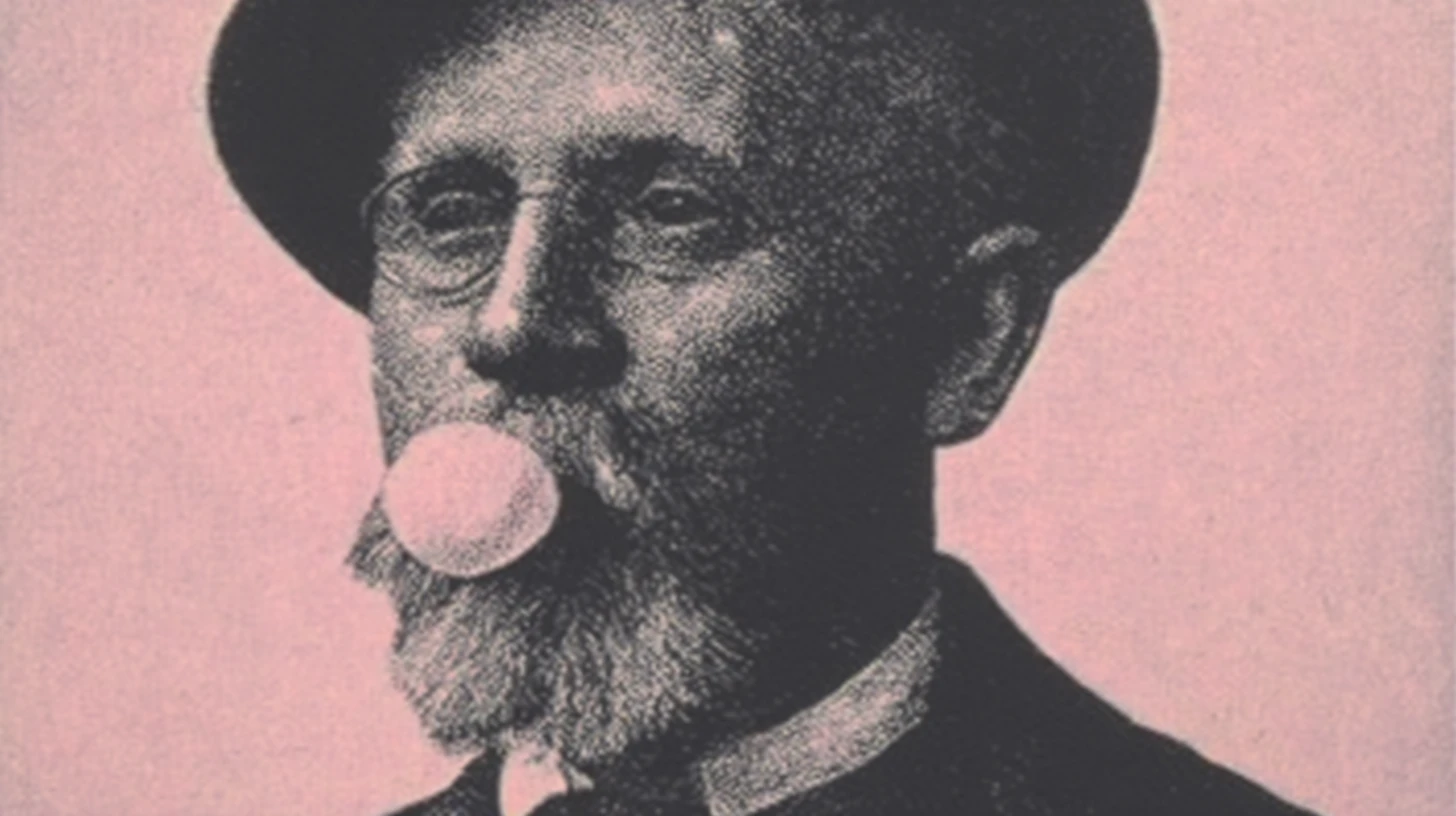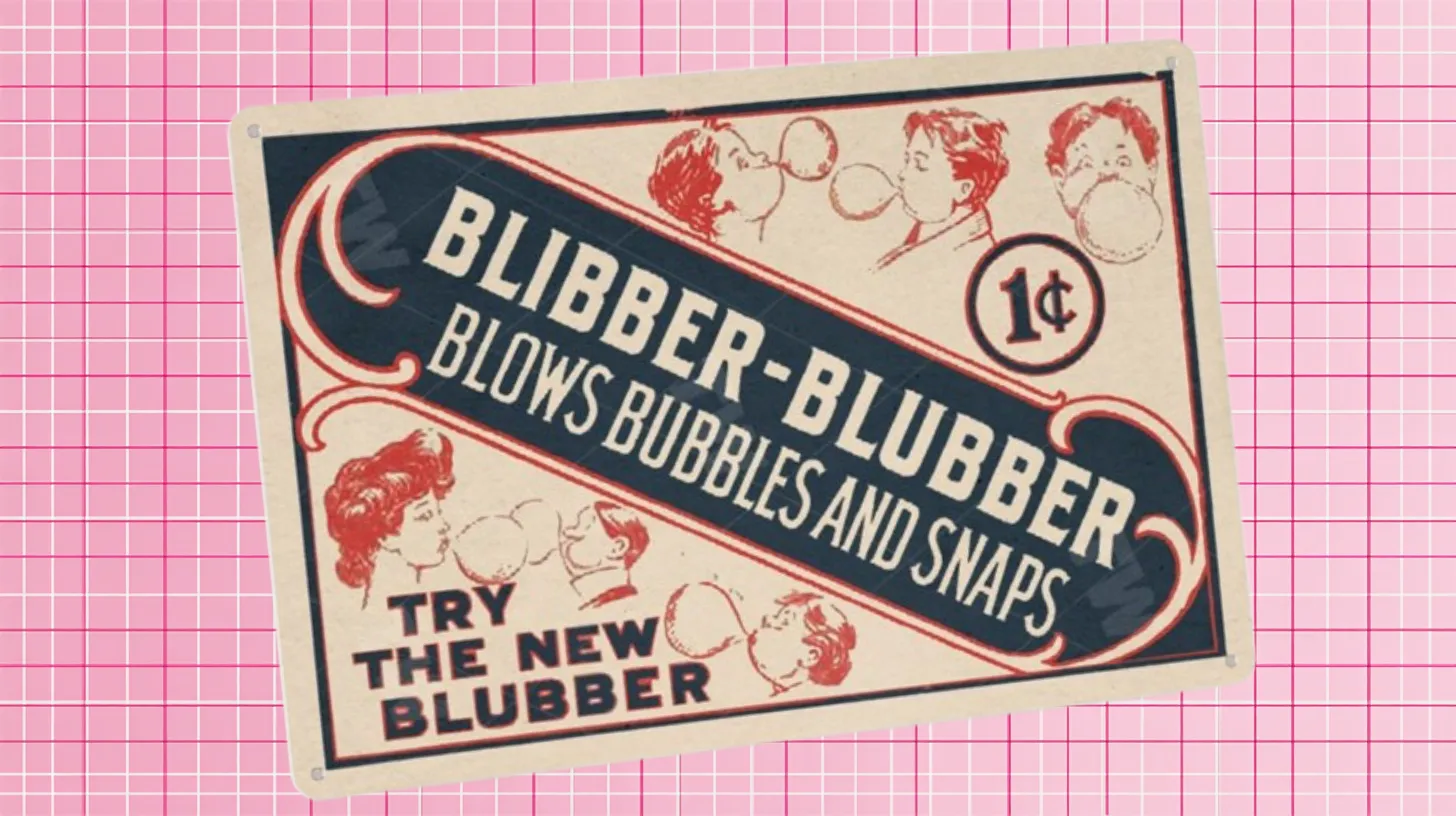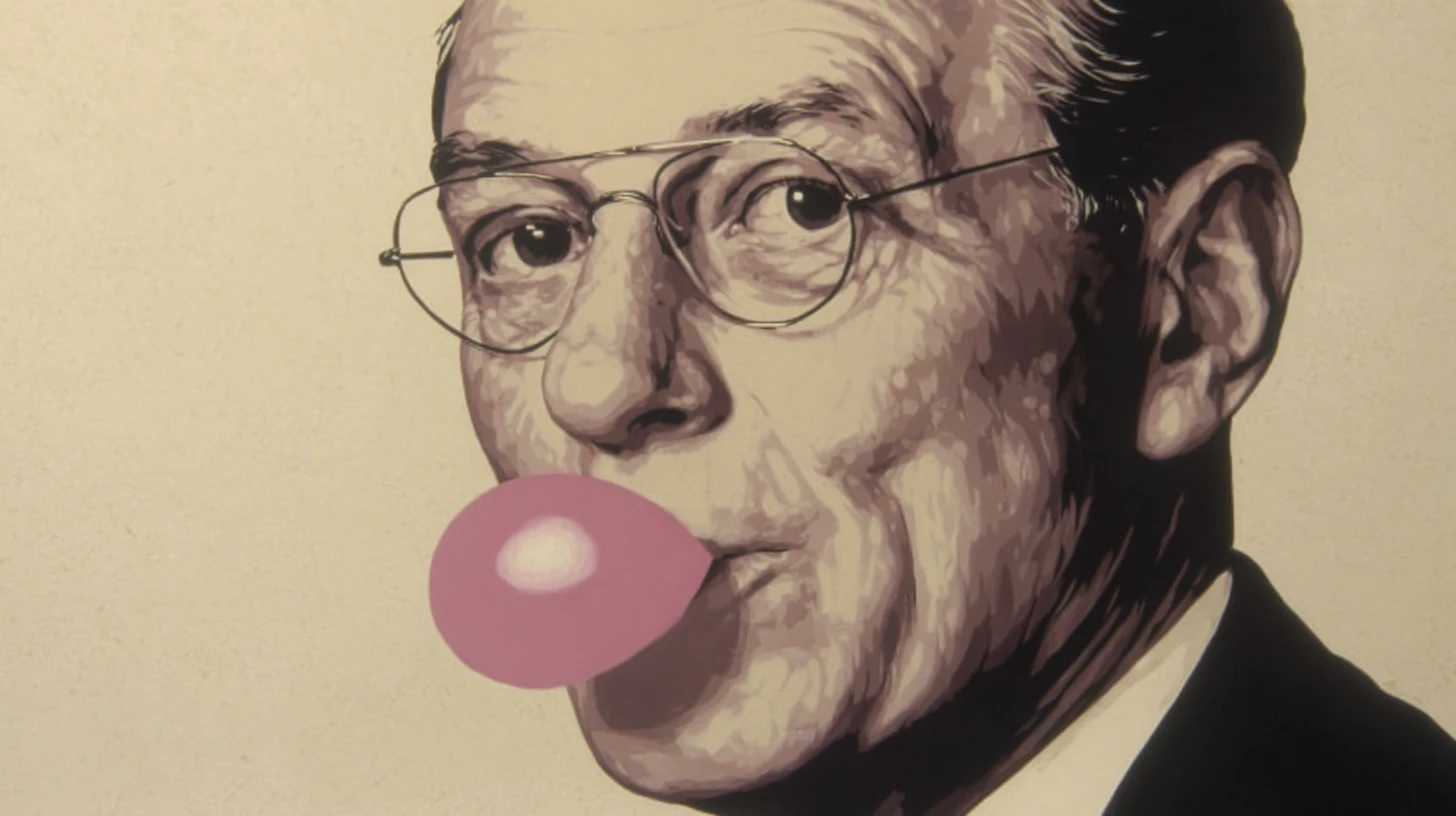.webp)
© History Oasis
A short history of Blibber Blubber. This is the story of how a sticky disaster from 1906 eventually became the pink phenomenon that defined American childhood.

Frank Henry Fleer arrived in Philadelphia in 1875 with big dreams and bigger ambitions. Born in Westphalia, Germany, in 1857, he didn’t come to America to build a candy empire. Bubble gum would be his golden ticket.
His path to candy greatness began when he married into the Holstein family business. Otto Holstein, a German Quaker, had established a flavoring extract factory in Philadelphia back in 1849. When Frank took over operations in the 1880s, he transformed this modest operation into something much grander.
Frank wasn’t content with ordinary success. While other companies were perfecting traditional chewing gum using chicle from Mexican sapodilla trees, he was dreaming of something entirely different. He wanted to create a gum that could blow bubbles.

In 1906, after years of experimentation, Frank Fleer finally cracked the code. Or so he thought.
He called his creation “Blibber Blubber.” A name that perfectly captured both the playful nature of his invention and, unfortunately, its fundamental problems. Using synthetic compounds based on natural rubber latex instead of traditional chicle, Fleer had indeed created something that could blow bubbles.
But Blibber Blubber was a disaster.
Imagine trying to chew concrete that occasionally became stretchy enough to inflate. The gum was brittle, sticky beyond belief, and had all the cohesion of wet sand. When somebody managed to blow a bubble, the aftermath was catastrophic. The gum would stick to faces, hair, clothes, or anything in its way. Removing it required vigorous scrubbing with turpentine.
Parents were horrified. Children were frustrated. Frank’s dreams of a bubble-blowing empire were permanently deflated.
The product never made it to market. After investing time, money, and considerable hope into Blibber Blubber, Frank quietly discontinued the gum. But he never forgot the dream.

Despite the Blibber Blubber setback, Frank Fleer was far from finished. During the 1880s, he became one of the first entrepreneurs to sell gum through coin-operated vending machines. His test at New York City’s Flatiron Building was brilliant in its simplicity—people paid a penny just to “drop a penny in the slot and listen to the wind blow.” The novelty was so popular that police had to remove the machine due to crowds.
His company flourished throughout the early 1900s, creating hits like Chiclets, the first candy-coated gum. Frank became a millionaire, but that elusive bubble gum success continued to haunt him.
In 1909, business pressures forced him to sell his chewing gum company to Sen-Sen, which eventually merged into American Chicle. But Frank’s entrepreneurial spirit couldn’t be contained. In 1913, he launched the Frank H. Fleer Corporation, determined to pick up where he’d left off.
Tragically, Frank Fleer died of a stroke in November 1921, never knowing that his sticky failure would eventually become one of America’s most beloved innovations.

Then came along Walter Diemer, a 23-year-old accountant who would unknowingly fulfill Frank Fleer’s decades-old dream.
Walter wasn’t a chemist, engineer, or confectionery expert. He was simply an accountant at the Fleer company who enjoyed tinkering with gum recipes in his spare time. In 1928, while Frank’s son-in-law Gilbert Mustin was running the company, Walter started experimenting in the third-floor laboratory.
Using Frank’s original Blibber Blubber formula as inspiration, Walter began his own journey of trial and error. For an entire year, he mixed, tested, and failed repeatedly. Then, one magical day, he created a gum that was less sticky than traditional varieties and could blow bubbles easily.
The next morning, his successful batch had hardened into an unusable mess. Walter couldn’t reproduce his accidental breakthrough.
For four agonizing months, he tried to recreate that perfect formula. Finally, after countless attempts, he achieved success with a 300-pound batch that would change history.

As Walter prepared his revolutionary gum for production, he realized something crucial was missing: color. The gray, unappetizing mass wouldn’t exactly fly off candy store shelves.
Racing to find food coloring, Walter discovered the factory only had one option available in sufficient quantity: pink.
That seemingly random choice would become one of the most iconic decisions in confectionery history. Pink bubble gum wasn’t a carefully researched marketing decision. It was pure necessity that created a cultural phenomenon.

The first market test was beautifully simple. Walter wrapped 100 pieces using a saltwater taffy machine and took them to a local candy store, pricing each piece at one penny.
They sold out in a single day.
They called the product Dubble Bubble—referring to the dramatically larger bubbles it could create compared to the failed Blibber Blubber.
In its first year alone, Dubble Bubble generated $1.5 million in sales, an astronomical success for the era.
Today, Tootsie Roll Industries continues to produce Dubble Bubble, manufacturing millions of pieces daily. The original pink color remains standard across the industry, and the simple joy of blowing bubbles continues to captivate new generations.
But none of this would have ever happened without the failure of Blibber Blubber.